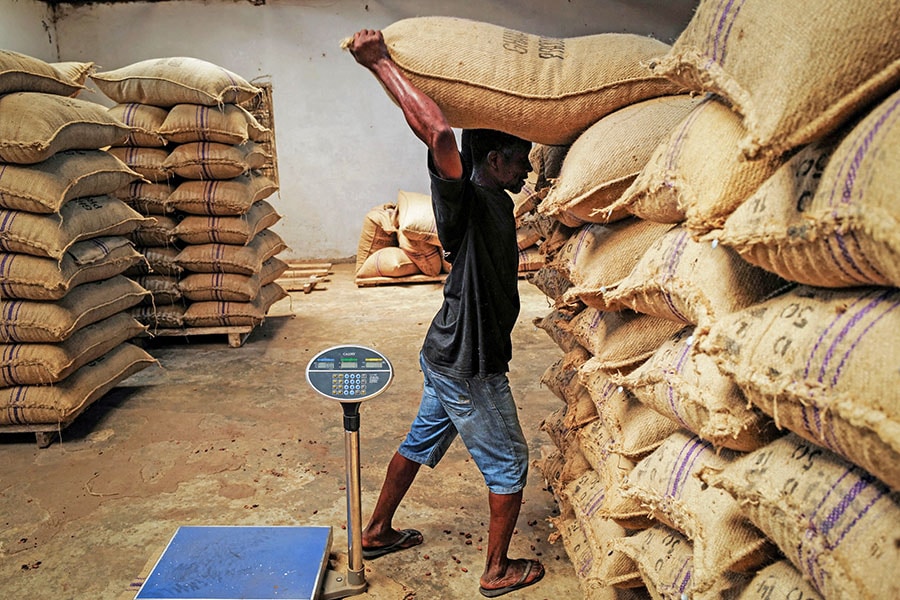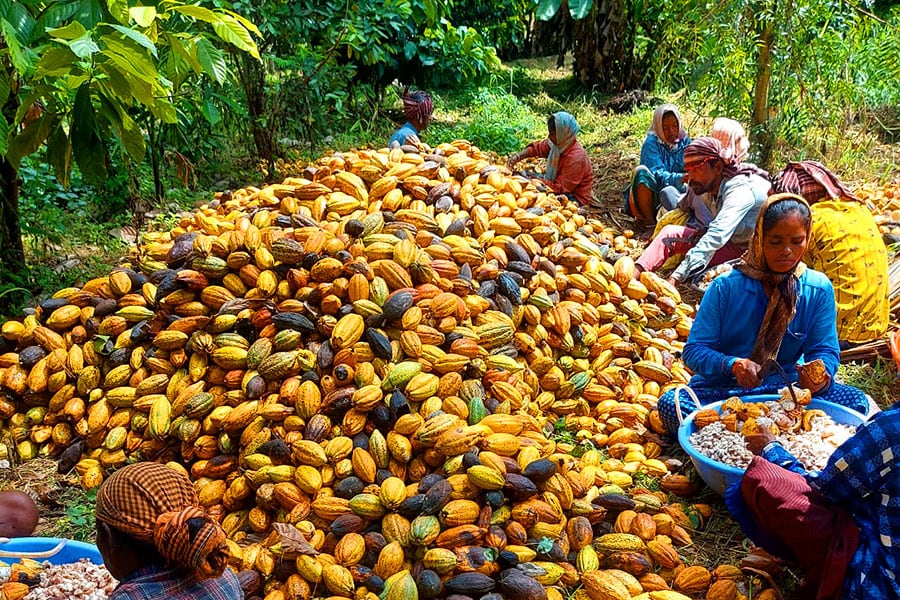
Record cocoa prices and its bitter aftertaste
Cocoa prices are at a record high caused by a dramatic drop in supply. Prices have more than doubled in the first three months of the year and more than tripled in the past 12 months, melting not just hearts but also wallets
 Image: Luc Gnago / Reuters
Image: Luc Gnago / Reuters
A farmer holds up cocoa beans that are put out to dry at a village in Sinfra, Ivory Coast. In West Africa, where about 70 percent of global cocoa is produced, undisputed cocoa powerhouses Ivory Coast and Ghana are facing catastrophic harvests this season as El Niño—the pattern of above-average sea surface temperatures—led to unseasonal heavy rainfall followed by strong heat waves. It worsened crop disease and also road conditions, disrupting bean deliveries to ports, causing the biggest deficit of cocoa in decades
 Image: Ange Aboa / Reuters
Image: Ange Aboa / Reuters
Virginijus Sinkevicius, European Commissioner for Environment, Oceans and Fisheries, and Francesca Di Mauro, ambassador of the European Union visit a cocoa-producing cooperative in Agboville, Ivory Coast on April 7, 2024. The International Cocoa Organization—a global body composed of cocoa-producing and consuming member countries—said in its latest monthly report that it expects the global supply deficit of cocoa to widen to 374,000 metric tons in the 2023-24 season, a 405 percent increase from 74,000 tons last season. Global cocoa supply is anticipated to decline by almost 11 percent to 4.449 million tons compared with 2022-23.
 Image: Francis Kokoroko / Reuters; Thierry Gouegnon / Reuters
Image: Francis Kokoroko / Reuters; Thierry Gouegnon / Reuters
According to data compiled since 2018 and obtained by Reuters, Ghana’s cocoa marketing board Cocobod estimates that 1.45 million acres from a total of 3.41 million acres of cocoa plantations have been infected with swollen shoot, a virus that will ultimately kill the plants. The ageing trees that yield less cocoa compound the woes. No major round of planting has been undertaken by cocoa farmers since the early 2000s, as their earnings from selling cocoa haven't generated enough income to help rehabilitate farms





















